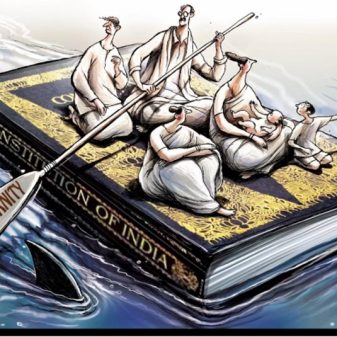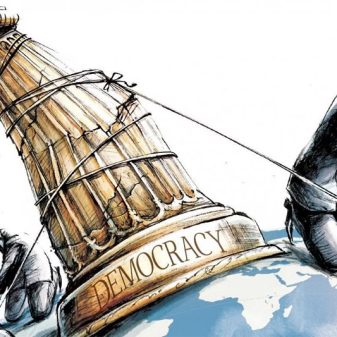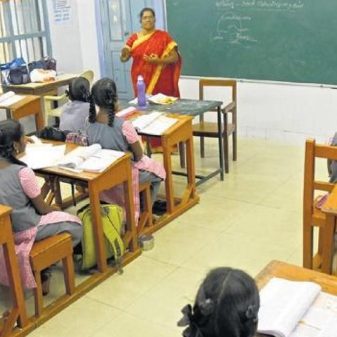
Kapil Sibal
The course curriculum will no longer cater to the needs of the Indian economy but will be oriented towards the requirements of the developed world.
Money flows only in the hope of making a profit. This is true of all forms of investment and in particular, foreign investment. Whether it is Foreign Direct Investment (FDI) or Foreign Institutional Investment (FII), the aim of any such enterprise is to make a profit.
The architecture of the World Trade Organization (WTO) for reduction or elimination of tariff barriers was to allow for export markets to be opened up for the developed world. The developed world has always had an upper hand when negotiating Foreign Trade Agreements (FTAs).
So, we should disabuse ourselves of the belief that the intent behind foreign investments in India is public good. They are here to make profit and the Government of India has opened its doors for such enterprises.
It has been recently reported that two Australian universities are ready to set up campuses in India replicating their institutions at home. This, according to the government, serves the purpose of ensuring that our students do not have to travel to Australia for higher studies. In reality, this is for those who already have the financial muscle to send their children abroad.
The policy framework for such investments, as has been articulated by this government, will allow such foreign campuses to regulate their own fees, work for profit and be entitled to repatriate surpluses, something that the Bharatiya Janata Party (BJP) had strongly opposed when I, as the then Minister for Human Resource Development, had mooted the idea of building an architecture for foreign investment in education.
While it is true that such a campus, when functional, will benefit Indian students, the fact is that the policy of the government with respect to reservation and affirmative action may not be applicable in admissions to such campuses.
Such campuses will tend to serve the interests of those students who can afford to take admission. Besides, the course curriculum will no longer cater to the needs of the Indian economy but will be oriented towards the requirements of the developed world.
Though one is happy to know that two of the allegedly top-ranked universities in the world are willing to explore the possibility of setting up campuses in India, I have my doubts whether other such universities like Harvard, Yale, Stanford, etc., will also be looking for such opportunities in India. Of the foreign higher educational institutions (FHEIs) in over 37 countries, 42 of over 300 campuses are in China, 33 in UAE, 16 in Singapore, 15 in Malaysia and 11 in Qatar. Of the 42 universities in China, the only known university of some global standing is NYU Shanghai, which has set up a campus. The other universities like Berkeley, Michigan, etc., owe their presence to joint centres or collaboration with Chinese universities. Not a single FHEI ranked above 100 is present in Malaysia.
To build a top-class university, what is needed is an amalgamation of research and high-quality teaching. The government’s track record of research grants to universities at home has been relatively poor.
The reason why universities in the US produce ideas that can be converted into goods and services is because of substantial investments by the US government for R&D in education and technology as opposed to minuscule investments by India both in education and technology development.
Besides, the research in the US is not tied in any way. Their universities are allowed to choose research areas and often in collaboration with private enterprises.
Even private entities with a track record benefit from exclusive research grants. Conglomerates have set up centres in universities where both teaching and research go hand in hand.
Unless the Government of India provides grants commensurate with our needs for research to create intellectual property and for the universities to have high-quality teaching, there is no possibility of this impacting the education system in India.
My worry, on the other hand, is that foreign universities will not be regulated with respect to both fixation of fees for students and salaries for teachers. Highly skilled teachers may well be persuaded to join such universities which in turn will damage the quality of domestic institutions in which the best minds are teaching.
A collaborative system of education with foreign universities, isolated from the rest of India, will become an oasis catering to the needs of the rich.
This is hardly the way forward. What will happen is that the surpluses generated will be repatriated to their countries of origin and the kind of investment constantly required for high-quality research and teaching will not happen.
If private higher educational institutions are allowed to be set up in India, the question that may well be asked is why such profit motives are not available to investments in higher education at home. The Supreme Court has rejected the ‘for-profit’ model and allowed for all surpluses made by higher educational institutions to be invested back into the university system. Some of it has resulted in creating institutions of excellence through a public-private participation model.
The government should be committed to financing public universities in a big way, allowing them to hire permanent faculty rather than short-term, ad hoc contracts which are exploitative in nature. The government should be publicly committed to ensuring that education is at the top of our national agenda for ‘Amrit Kaal’ to be realised.
The way in which the New Education Policy caters to the setting up of foreign universities only shows that this government has no commitment towards educating the young in our higher educational institutions and is hoping that foreign universities will cater not to the needs of education but discourage the rich from sending their children abroad by providing such facilities at home.
This way, the government may save foreign exchange but will have let down the education system in India.
(The writer is a Senior lawyer and member of Rajya Sabha)





